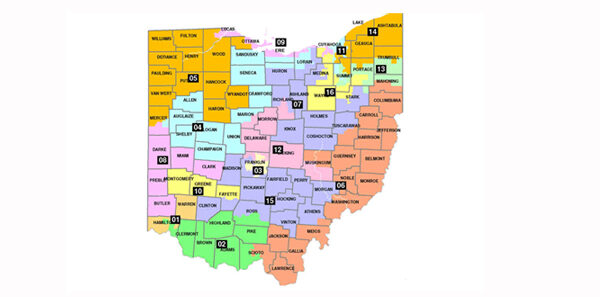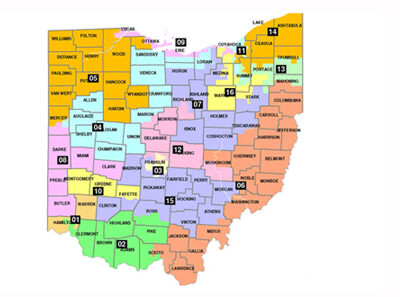Last Tuesday, March 26, the Supreme Court heard oral arguments on two partisan gerrymandering cases: one challenge to a Republican gerrymander in North Carolina, and one to a Democratic gerrymander in Maryland. It’s not a stretch to say that the Court’s upcoming decisions could help put an end to a particular brand of partisan abuse that has plagued our government for centuries. Or, they could be an enormous step backwards in the fight to ensure fair representation – or for that matter, might punt on the core issues and resolve the cases on another basis altogether. Having just finished trial in our own partisan gerrymandering lawsuit, A. Philip Randolph Institute of Ohio v. Householder, we’re watching both cases very carefully.
Ohio’s case certainly shares some common background with the other two. At trial, we showed that national and state Republicans engineered a Congressional map that would “pack” the highest possible number of Democratic voters—the “dogmeat” voters, as one Republican operative derided them—into four districts, and “crack” the rest by dividing them thinly among the remaining twelve. The map-drawers’ plan was to guarantee a 12-4 map in Republicans’ favor, even though Ohio’s statewide vote is typically far more balanced.
And it worked. Regardless of shifts in the political winds in election after election, Ohio’s district map has been a solid 12-4 ever since the map was enacted – for nearly a decade. Republican candidates earned 51% of the statewide vote in 2012, 59% in 2014, 57% in 2016, and 52% in 2018, yet they always have a fixed control of 75% of the seats. In North Carolina, Republicans used the same packing and cracking strategy to make a 10-3 map – and as one legislator proudly declared, it was 10-3 only “because I do not believe it’s possible to draw a map with 11 Republicans and two Democrats.” Not to be outdone, Maryland Democrats drew for themselves a 7-1 map, again only because they couldn’t find a way to make it 8-0. Voters of each state’s minority party—Republicans in Maryland, Democrats in Ohio and North Carolina—saw the power of their votes diluted to meaninglessness. With election outcomes preordained by the map, minority party voters have become frustrated; many don’t turn out to vote, don’t contribute to their favored candidates, or decline to run for office themselves.
The Supreme Court ruled decades ago that extreme partisan gerrymanders can be reviewed and struck down by the courts, in theory. The justices have grappled ever since with the when and how of it. How do we identify a partisan gerrymander when we see one? What evidence must be presented, what legal and factual bars must be cleared, before a court can be asked to step in? How must voters show that the map harms them personally?
Depending on the Supreme Court’s approach to the problem, Ohio’s, North Carolina’s, and Maryland’s cases could present the Court with distinct questions, or could be resolved jointly. North Carolina voters, for example, testified that their votes were devalued, and that the map created a burden on their ability to associate with like-minded people. They offered expert testimony using statistical metrics—such as the efficiency gap, which measures whether one party’s votes are disproportionately “wasted”—to show that the map unfairly favored Republicans. Ohio’s voters testified to similar injuries, and offered additional categories of statistical evidence of a partisan tilt.
Legal theories vary as well. In Ohio, we have argued not only a violation of the First Amendment right of association and the Equal Protection Clause of the Fourteenth Amendment—as the plaintiffs in North Carolina did—but a denial of a meaningful right to vote itself.
We can’t know yet whether, or how, the Supreme Court’s decisions in the Maryland and North Carolina cases will impact the outcome in Ohio’s. Experience teaches us that gerrymandering will not go away on its own, and as technology and data-gathering methods improve, will only get more precise. Whether in the current round of decisions or in the future, we are confident that the fight to preserve fair representation is both worthy, and winnable.


